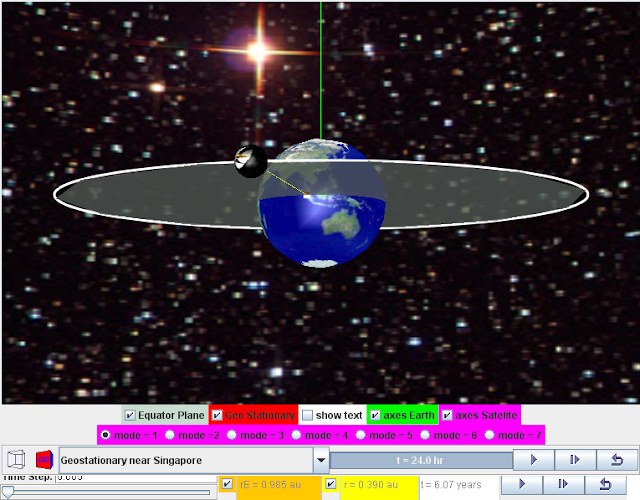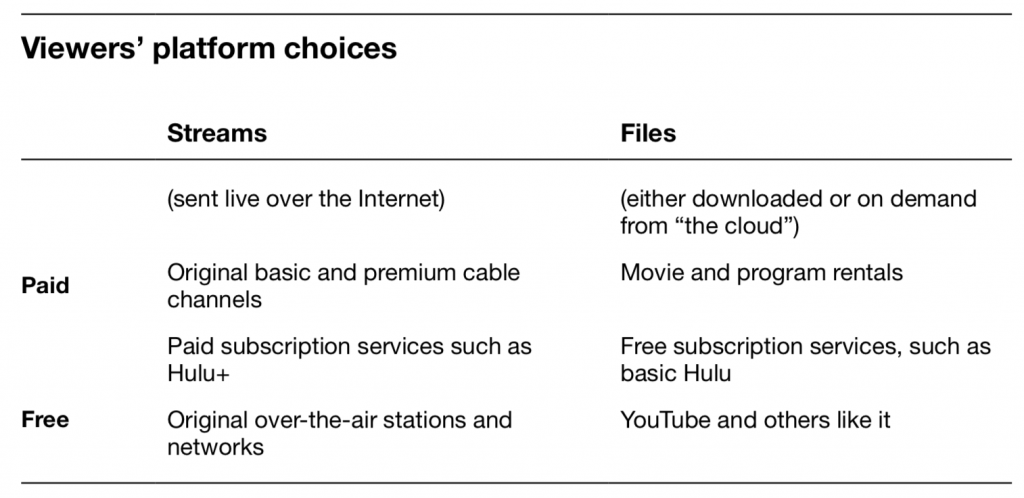To answer the question Where are SiriusXM radio stations broadcasted from?, I replied,
If you’re wondering where they transmit from, it’s a mix.
SiriusXM transmits primarily from a number of satellites placed in geostationary orbit, 35,786 kilometres or 22,236 miles above the equator. From Earth they appear to be stationary. Two of the XM satellites, for example, are at 82° and 115° West. That’s roughly aligned with Cincinnati and Las Vegas, though the satellites are actually directly above points along the equator in the Pacific Ocean. To appear stationary in the sky, they must travel in orbit around the Earth at speeds that look like this:
- 3.07 kilometres or 1.91 miles per second
- 110,52 kilometres or 6,876 miles per hour
- 265,248 kilometres or 165,025 miles per day
Earlier Sirius satellites flew long elliptical geosynchronous orbits on the “tundra“ model, taking turns diving low across North America and out into space again.
Satellites are also supplemented by ground repeaters. If you are in or near a site with repeaters, your Sirius or XM radio may be tuned to either or both a transmitter in space or one on the ground nearby. See DogstarRadio.com’s Satellite and Repeater Map to see if there is one near you.
In addition, SiriusXM also streams over the Internet. You can subscribe to radio, streaming or both.
As for studios, those are in central corporate locations; but these days, thanks to COVID-19, many shows are produced at hosts’ homes. Such is the case, for example, with SiriusXM’s popular Howard Stern show.
So, to sum up, you might say SiriusXM’s channels and shows are broadcast from everywhere.
I should add that I’ve been a SiriusXM subscriber almost from the start (with Sirius), and have owned two Sirius radios. The last one I used only once, in August of 2017, when my son and I drove a rental minivan from Santa Barbara to Love Ranch in central Wyoming, where we watched the solar eclipse. After that it went into a box. I still listen a lot to SiriusXM, almost entirely on the phone app. The rest of my listening is over the Web, logged in through a browser.
Item: a few days ago I discovered that a large bill from SiriusXM was due to a subscription for both the radio and the Internet stream. So I called in and canceled the radio. The subscription got a lot cheaper.
I bring this up because I think SiriusXM is a single example of a transition going on within the infrastructure of what we still call radio, but instead we would call streaming if we started from scratch today. We would call it streaming because that’s how broadcasting looks like on the Internet. And the Internet is subsuming and gradually replacing over-the-air radio with what for most purposes is a better system. When it’s done, most or all of over-the-air radio will be gone.
In The Intention Economy (Harvard Business Review Press, 2012), I saw this future for what we wouldn’t call television if we started that one from scratch today (or even when this was published, eight years ago):
Today we’d put Netflix, Amazon Prime, YouTube TV and Apple TV in the upper left (along with legacy premium cable staples, such as HBO and Showtime). We’d put PBS stations there too, since those became subscription services after the digital transition in 2008 and subsequent spectrum sales, which reduced over-the-air TV to a way for stations to maintain their must-carry status on cable systems. (Multiple “repacks” of TV stations on new non-auctioned channels have required frequent “re-scans” of signals on TVs of people who still want to watch TV the old-fashioned way and hook up an antenna.)
While over-the-air radio has been terminal for years, its death has been less hastened by regulatory changes to satisfy the need for more data-friendly frequencies (which TV has, and radio doesn’t). Here’s the diagnosis I published in 2016. I’ve also been keeping a photographic chronicle of radio in hospice, over on my Flickr account for Infrastructure. A touching example of one station’s demise is Abandoned America’s post on the forgotten but (then) still extant studios of WFBR (1924-1990) in Baltimore.
The main difference with radio is that it still wants to be free.
Want to have some fun with that? Go to RadioGarden and look around the globe at free streams from everywhere. My own current fave is little CJUC in Whitehorse, Yukon. (I list others here.) All of those are what we say is “on” the Internet. But where is that?
We can pinpoint sources in the physical world, as RadioGarden does, on a globe; but the Internet defies prepositions, because there is no “there” there. There is only here, where we are now, in this non-place with no distance and no gravity because its nature is to defy both, leaving those up to the individual. I’m in Santa Barbara right now, but could be anywhere. So could you.
On the Internet, over-the-air TV and radio are anachronisms, though charming ones. Like right now, as I’m listening to Capricorn FM from Polokwane, South Africa. (“Crazy up-tempo hip-hop” is the fare.) But I’m not listening on a radio, which would require tuning to 89.9fm somewhere within range of the station’s transmitter. I’m here, on (or in, or through, or pick-your-preposition) the Internet.
A few years ago my then-15-year-old son asked me what the point of “range” and “coverage” was for radio stations. Why, he wondered, were those features rather than bugs? Meaning why is it okay for a station to fade away as you drive out of town?
His frame of reference, of course, was the Internet. Not the terrestrial world where distance and the inverse square law apply.
Of course, we will always live in the terrestrial world. The Internet may go away, or get fractured into regions so telecom companies can bill for crossing borders and governments can limit what’s accessible within those borders. But the Internet is also an infrastructural genie that is not going back in the bottle. And it is granting many wishes, all in a new here. It exists in the manner of a natural law, such as we have with gravity in the physical world.
And I submit that we are still only starting to understand it. (For how we’re only starting, see here.)
This post first appeared in a sister blog, Trunk Line.


Leave a Reply